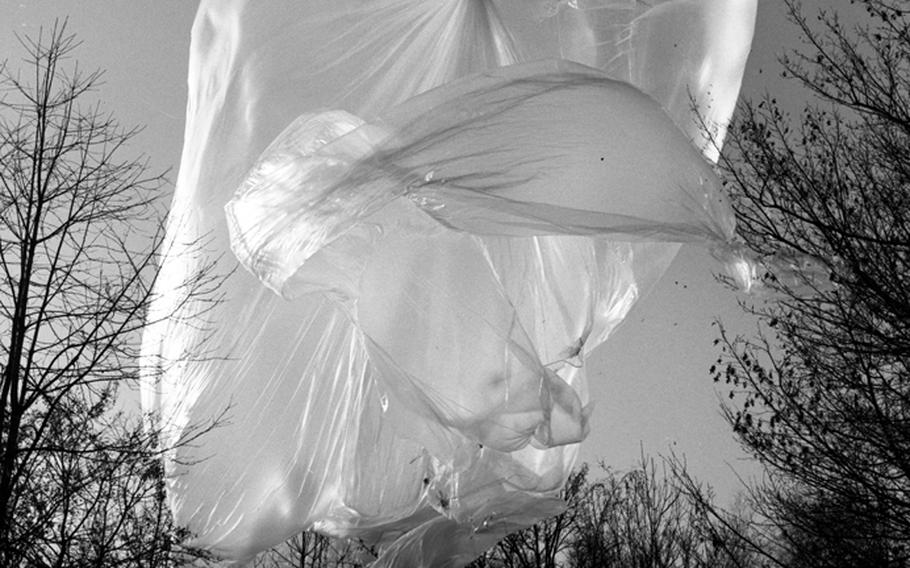
A weather balloon ends up in the trees after its launch at Giebelstadt, Germany, in 1956. (Jim Black/Stars and Stripes)
GIEBELSTADT, Germany — A group of German and U.S. newspapermen gathered to observe the launching of a gigantic weather balloon today witnessed some unscheduled action when the 200-foot-high plastic bag rose a few feet from the ground after being released and then soared off into a clump of trees a half-mile from the launching site.
The balloon was one of 32 lofted by the 1110th Air Support Gp since it began meteorological research work here two weeks ago. It is the only unit of its type in Europe, Maj. John L. Krebs, CO of Det 5, said.
Krebs, who during the launching operation explained the hour-long procedure necessary to prepare the giant balloons for exploration of the upper atmosphere, said today's balloon "failure" was only the second since the project got under way here Jan. 10.. He said high winds sometimes cause faulty calculations of the amount of hydrogen needed to get the big bag and its instrument-carrying tail airborne.
The launchings are part of a worldwide Air Force program of research into all types of weather phenomena encountered at high altitudes. The overall project has been dubbed Moby Dick.
Shortly after the group heard from Krebs that the balloons are equipped with safety devices which parachute the gondola carrying the instruments and destroy the balloon if it fails to reach the cruising altitude" of'30.000 feet soon after release, the reporters watched the devices "shred" the balloon as it hung above the trees.
Krebs also said the 450-pound gondola which carries ballast and instruments is reduced to 150 pounds by the time it is jettisoned by an electronic device and floats to earth under a small parachute.
During the launching, a crew of 10 men readied the balloon for flight. Four men guided the balloon's silvery folds as they were slowly inflated over the launching vehicle. Two others controlled the feed of hydrogen gas into the bag and the rest coordinated the lifting and eventual release of the balloon.
Krebs said since the program got underway, more than 4,000 balloons have been launched by the Air Force throughout the U.S. and at overseas installations. He said balloons released at this center have reached altitudes of 30,000-100,000 feet and have remained aloft as long as three days.
All the balloons released here have been recovered, he said, when asked if any had ventured behind the Iron Curtain. He added that thus far none have come down in populated areas. All have landed in forestland and on open fields.
This base was selected as a launching site, Krebs said, because the surrounding area is "quite flat" and because the base is well removed from populated areas. (The town of Giebelstadt is about a mile distant.)